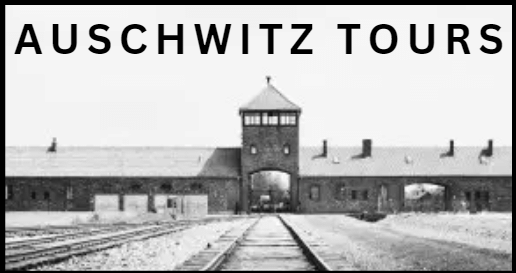Prisoners in Auschwitz Overview
Types Of Auschwitz Prisoners
Jews in Auschwitz were one of the primary groups targeted by the Nazis and were subjected to brutal treatment. They were identified by a yellow badge with a black "J" in the center and were often subjected to forced labor, medical experiments, and mass extermination in gas chambers. Many Jews were separated from their families upon arrival at the camp and forced to endure inhumane living conditions. The majority of the Jews who were sent to Auschwitz did not survive, with an estimated 1.1 million being killed during the camp's operation.
Political prisoners in Auschwitz were identified by a red badge and were individuals who had been arrested for opposing the Nazi regime or engaging in political activism. They were subjected to harsh living conditions, forced labor, and were often used for medical experiments. Many political Auschwitz prisoners were executed or died as a result of their treatment in the camp.
Do Checkout: Auschwitz Tickets & Tours
Roma and Sinti prisoners were identified by a brown badge and were subjected to extreme discrimination and persecution. They were often subjected to forced labor, medical experiments, and were targeted for extermination in gas chambers. It is estimated that as many as 500,000 Roma and Sinti were killed in the Holocaust.
Also Read: Wawel Royal Castle
Criminals in Auschwitz were identified by a green badge and were individuals who had committed crimes such as theft or burglary. While they were treated somewhat better than other prisoners, they were still subjected to forced labor and harsh living conditions.
Must Read: Oskar Schindler's Enamel Factory Guide
Asocials were identified by a black triangle badge and were individuals who were deemed "asocial" by the Nazi regime, including vagrants, atrocious, and those who did not conform to traditional gender roles. They were subjected to forced labor and harsh living conditions.
Recommended Read: Tourist Attractions Near Auschwitz
Soviet prisoners of war were identified by a red triangle badge with the letters "SU". They were subjected to extreme brutality and were often used for forced labor. It is estimated that as many as 3.3 million Soviet prisoners of war died in German custody during World War II, with many of them being held in concentration camps like Auschwitz.
Suggested Read: Plan Your Visit to Auschwitz
The Experience Of Auschwitz prisoners
Auschwitz prisoners experienced unimaginable horror during their time in the camp. Daily life in the camp was marked by extreme brutality, forced labor, and constant fear of punishment and death. The food, accommodation, and hygiene conditions were atrocious, with prisoners in Auschwitz often forced to live in overcrowded, unsanitary barracks and given minimal rations to survive.
Book Now: Wawel Castle Tickets
Forced labor was a constant part of life for Auschwitz prisoners, with many being subjected to grueling work assignments that often led to injury or death. Medical experiments were also carried out on prisoners, including sterilization and testing of new drugs and medical procedures.
You May Also Like: Restaurant Near Auschwitz
Despite the constant danger, many Auschwitz prisoners attempted to resist and escape the camp. Some joined underground resistance movements and engaged in acts of sabotage, while others attempted to flee the camp or stage uprisings against their captors.
Also Read: Auschwitz Gas Chambers
Punishment and executions were a common form of control in the camp, with prisoners being subjected to beatings, torture, and public executions for even minor infractions. The brutal and dehumanizing treatment of Auschwitz prisoners serves as a stark reminder of the atrocities that can occur when hate and prejudice are allowed to go unchecked.
Suggested Read: Tours From Prague to Auschwitz
FAQs
What was daily life of prisoners at Auschwitz?
Daily life in Auschwitz was marked by extreme brutality, forced labor, and constant fear of punishment and death. Prisoners In Auschwitz were subjected to harsh living conditions, minimal food and medical care, and were often forced to perform grueling work assignments that led to injury or death.
Checkout & Book: Oskar Enamel Factory Tickets
What were the conditions of prisoners in the Auschwitz camp?
The conditions in the Auschwitz camp were atrocious, with prisoners forced to live in overcrowded, unsanitary barracks and given minimal rations to survive. Sanitation was poor, leading to the spread of disease, and medical care was minimal.
What types of medical experiments were performed on prisoners at Auschwitz?
The medical experiments performed on prisoners at Auschwitz were extremely cruel and included testing of new drugs and medical procedures, as well as sterilization and other forms of genetic research.
Must Read: Wieliczka Salt Mine
How many prisoners died at Auschwitz?
It is estimated that around 1.1 million prisoners died at Auschwitz during its operation, with the majority being Jews. Other groups such as Roma and Sinti, political dissidents, and Soviet prisoners of war also suffered significant losses.
Why is Auschwitz so famous?
The auschwitz poland is one of the major highlights as well as a historical attraction that narrates the story of the genocide under the rule of Nazis. This concentration camp tells you the story of the thousands of lives ones that were taken here, during the Nazi period and Hitler rule. Under the Nazi, the arrest of Polish jews were capacitated inside the prison, and hence these humongous consecration camps were built wherein you will find gas chambers, torture chambers and more.

